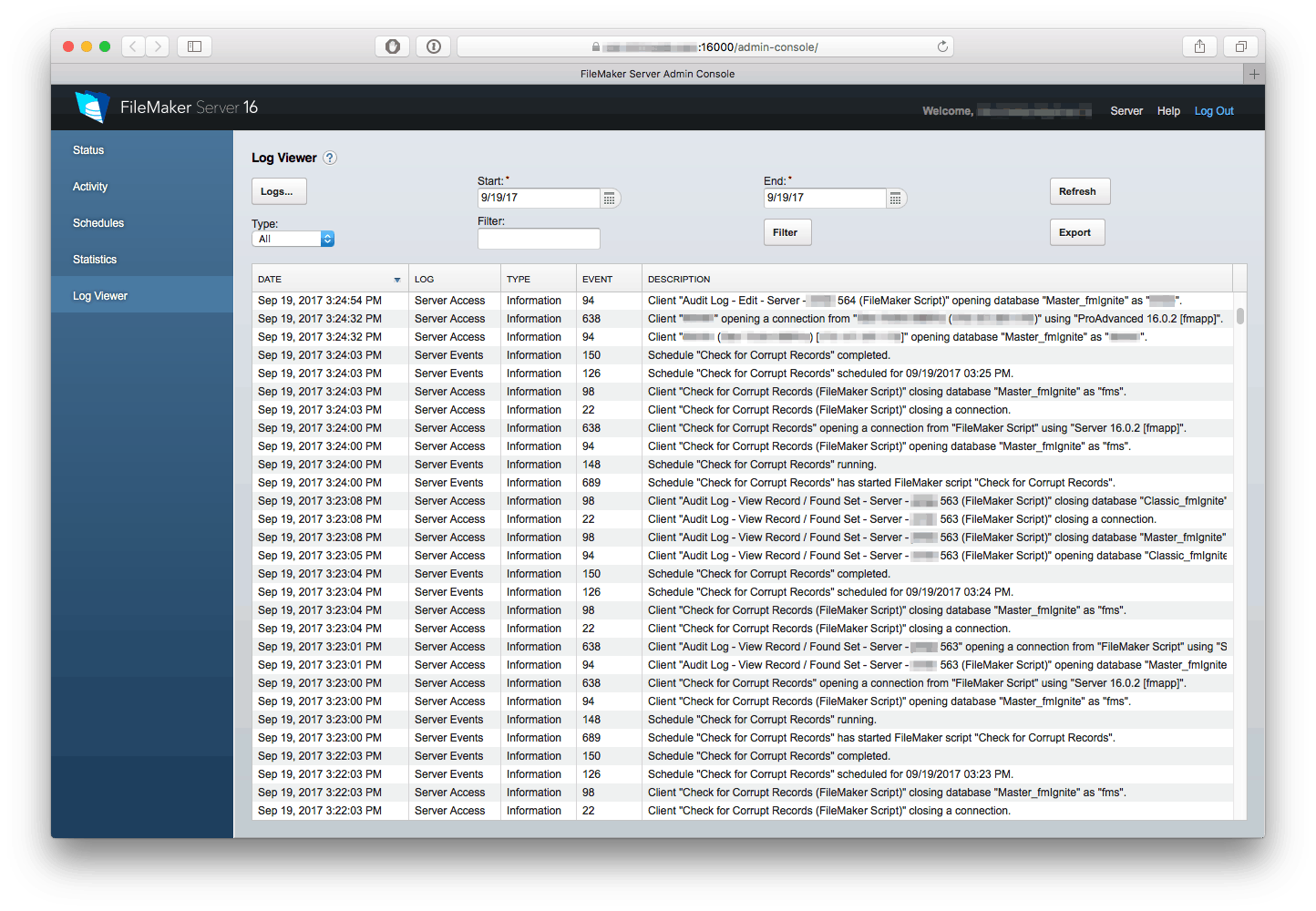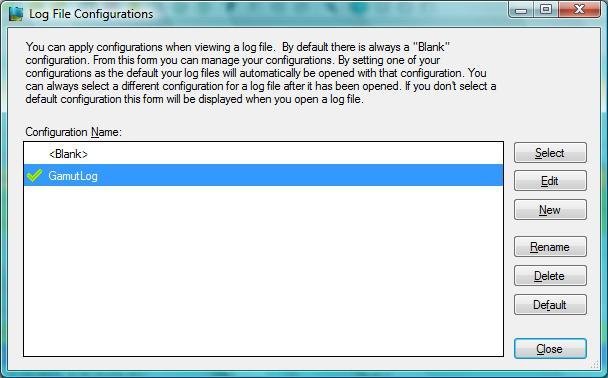
Result displays selected timestamp entry and those with earlier timestamps. Result displays selected timestamp entry and those with later timestamps.Ĭheck and enter the latest timestamp to be viewed.

OptionĬheck and enter the earliest timestamp to be viewed. Any combination of these options can be used. The following table lists and describes the filter options for the Log File Viewer utility. Use the Log File Filter and Display Options dialog box to view a subset of log entries from the displayed log file. Click on the column header to sort the displayed data (in ascending or descending order) based on Category. Click on the column header to sort the displayed data (in ascending or descending order) based on Line #. The line number from the file associated with the log entry. Click on the column header to sort the displayed data (in ascending or descending order) based on File. Click on the column header to sort the displayed data (in ascending or descending order) based on Text. Click on the column header to sort the displayed data (in ascending or descending order) based on Thread. The thread associated with the log entry. Click on the column header to sort the displayed data (in ascending or descending order) based on Timestamp. Log items are initially displayed according to timestamp, from earliest to latest. Hover over a fixed column edge to display an icon to reset column width.Click on a column header to sort the log view based on that field, in either ascending or descending order.Log file columns are fixed in position but can be adjusted for viewing in the following ways. See Generating Crash Dumps for more information.Ĭlick the following image to see an example of the Log File Viewer dialog box with open screens displayed in a cascade view: User Local Crash Dumps - Local crash dumps are not enabled.Double-click to select and view an application log file.
#Log file viewer windows#
Gather Logs - accesses the Windows file directory where the open log files are located.Double-click any result row to view properties for that module. Loaded Modules - use this option to view and search file information for modules loaded in your system.Diagnostics - access the following options for additional analysis from the drop-down menu:.See Client Log Settings in the Logging section for more information. Client Settings - opens the Client Settings dialog box to view and modify client log settings for the application on an ad hoc basis.In addition to information about the application, the About box includes the following buttons: The location of the application's file executable.The log file location, including a hyperlink to the log file.
#Log file viewer software#

#Log file viewer how to#
See Version Management for instructions on how to do this. Note: You can also set up this utility to be installed and launched (started) via CygNet Client Installer so that the application can be version managed.


 0 kommentar(er)
0 kommentar(er)
